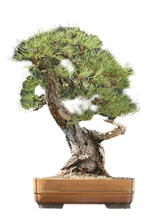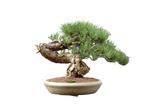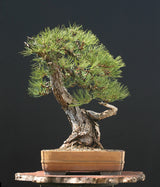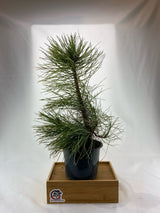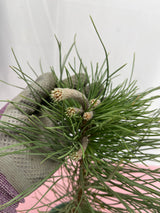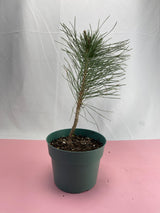Austrian Pine
The Austrian Pine (Pinus nigra) is a needled outdoor evergreen that is native to Southern Mediterranean Europe from the Iberian Peninsula to the Eastern Mediterranean, on the Anatolian peninsula of Turkey. This bonsai can withstand many environmental conditions of an urban environment, such as pollution and salt sprays in the air. While young, the Austrian Pine forms a special pyramidal shape and with time, will develop a rounded flat or dome-shaped top as the crown.
All Pines dislike permanently wet soil, though, ensured with proper care, the soil should never dry out completely. Pines are happy when they are in the sunlight during Spring, Summer, and Fall. Insufficient sunlight will result in extended needle length or even dieback of shaded branches. These branches tend to droop as the tree ages so a little pruning is necessary to raise the canopy where the branches overhang. Late winter or early spring is the best to do this pruning.







